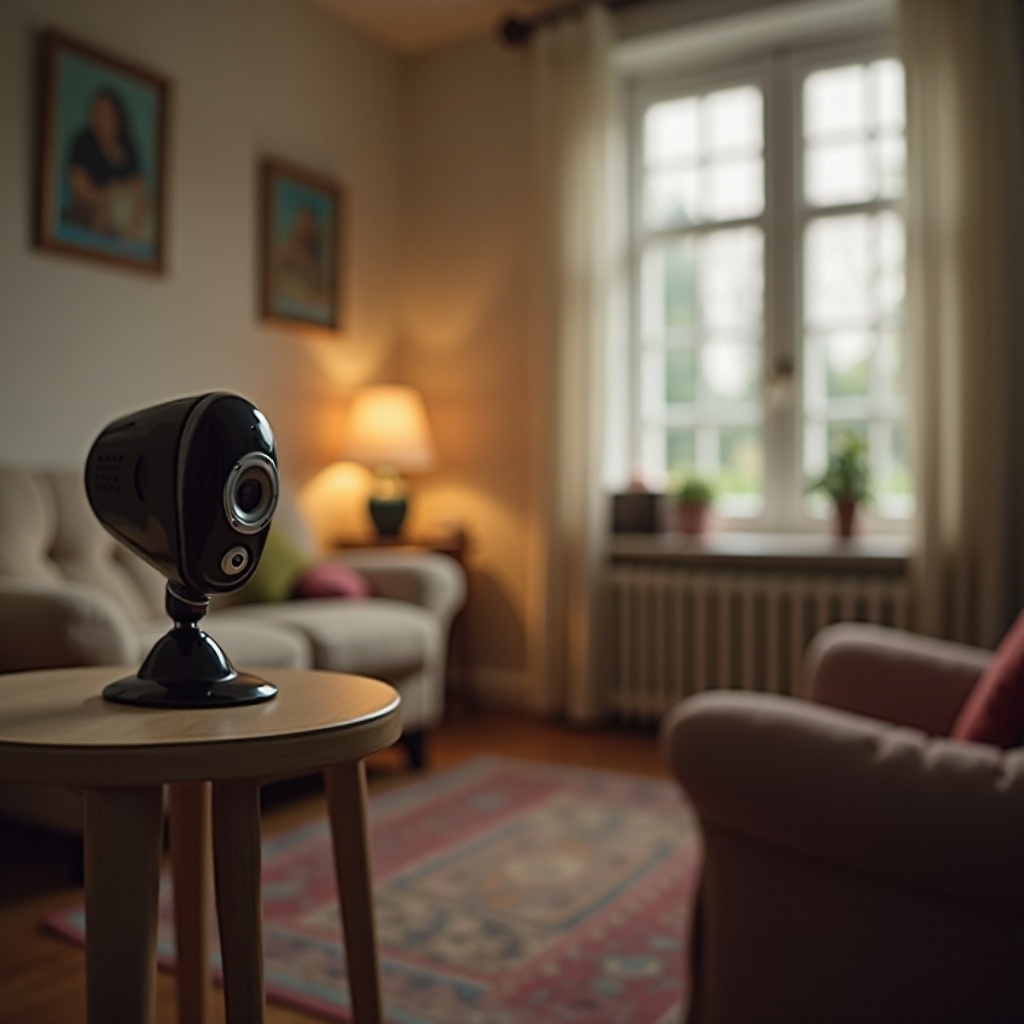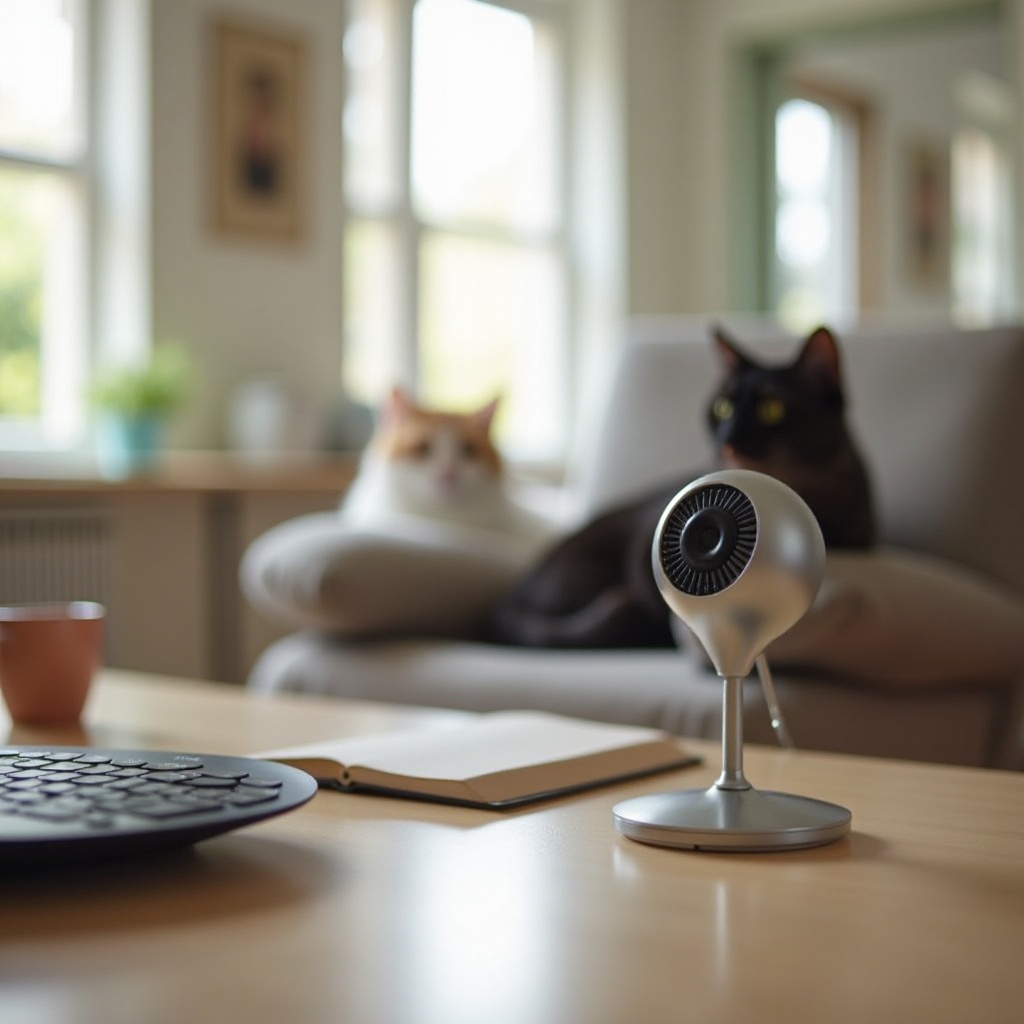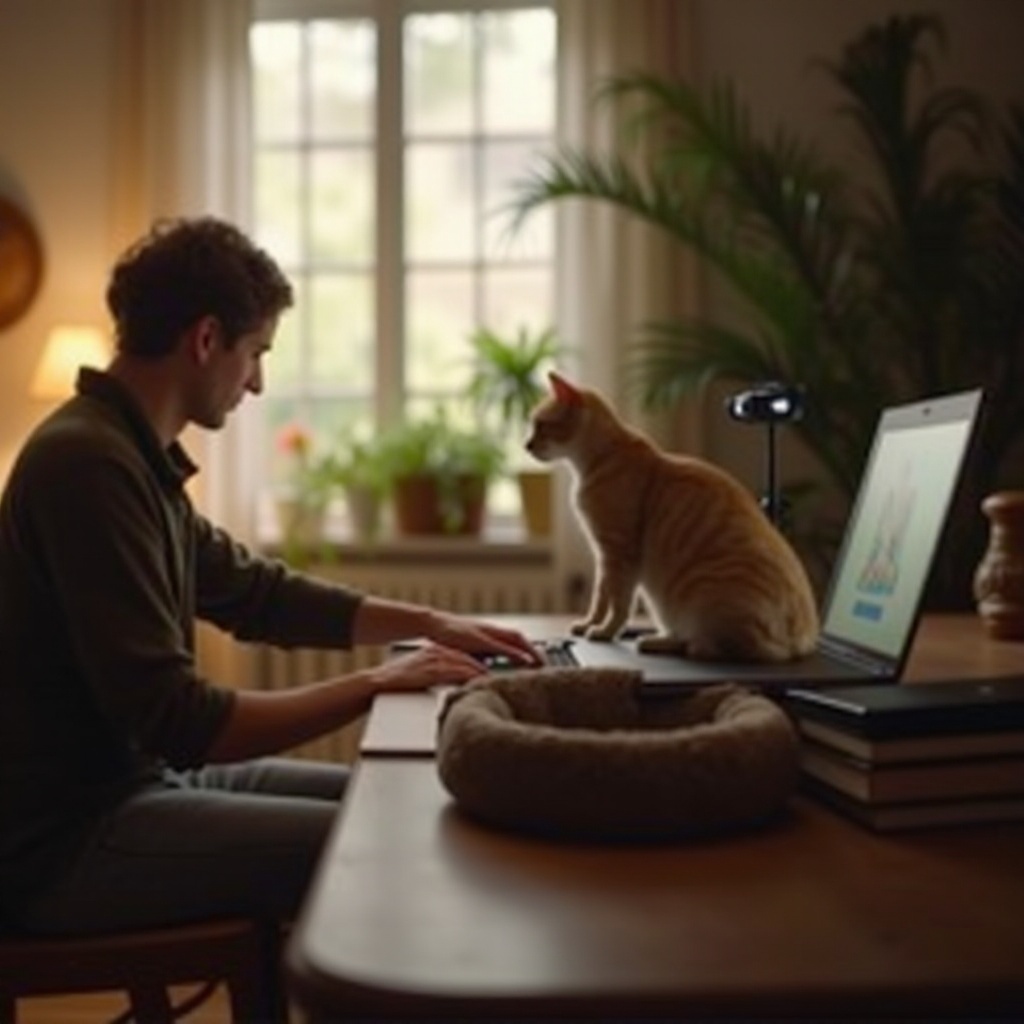Introduction
Leaving your cat alone at home can be concerning, especially if you worry about their well-being. Fortunately, technology offers a simple solution: using your webcam to monitor your cat when you’re out. This method allows you to keep an eye on your feline friend, ensuring they are safe and comfortable even when you’re not there. In this guide, we will walk you through the entire process, from choosing the right webcam to setting it up and using the best monitoring software available. By the end, you’ll have the peace of mind that your cat is secure and happy while you’re away.

Why Monitor Your Cat with a Webcam?
Monitoring your cat with a webcam has numerous benefits. Firstly, it allows you to ensure your pet’s safety. Cats are curious creatures, often getting into tight spots or interacting with household items that might be hazardous. By keeping a virtual eye on them, you can intervene if you spot something potentially dangerous.
Additionally, watching your cat while you’re out provides emotional comfort. Seeing your pet in real-time can ease anxieties about leaving them alone. It can also provide insights into their behavior when you’re not around. You might notice they have different routines or playful moments you weren’t aware of.
Moreover, webcams can help with specific issues. For example, if your cat is known to have separation anxiety, monitoring can aid in tracking progress with any behavioral training. With these compelling reasons, investing in a webcam for cat monitoring is a wise decision.
Choosing the Right Webcam for Pet Monitoring
Selecting the right webcam is crucial for effective cat monitoring. Here are some key features to consider:
-
Resolution: Aim for a high-resolution webcam. A clear image is essential to spot any potential problems. Look for at least 1080p resolution to ensure clarity.
-
Wide-Angle Lens: A wide-angle lens provides a broader view of the room. This feature is especially useful if your cat tends to roam around a lot.
-
Night Vision: Cats are often most active at night. A webcam with night vision capabilities ensures you can monitor them regardless of the lighting conditions.
-
Motion Detection: This feature alerts you when there is movement in the room. It’s useful for catching when your cat is active and checking in real-time.
-
Two-Way Audio: Being able to hear and speak to your cat can be comforting. Some webcams come with built-in microphones and speakers for real-time communication.
With these features in mind, you can choose a webcam that best suits your monitoring needs.

Setting Up Your Webcam
Once you have chosen the right webcam, the next step is setting it up. Proper placement and installation are crucial for effective monitoring.
Proper Placement for Optimal Coverage
Start by selecting the best spot for your webcam. Ideally, place it where your cat spends the most time. Common spots include near their favorite sleeping area, by the windowsill they like to perch on, or in the room where their toys are kept. Ensure the webcam is at a height that covers a broad area of the room. Proper placement ensures you maximize your monitoring capabilities.
Step-by-Step Setup Guide
Here’s a step-by-step guide to get your webcam up and running:
-
Mounting the Webcam: Secure the webcam in the desired position using a tripod, clamp, or wall mount. Ensure it’s stable and captures the best angle of the room.
-
Connecting to Power: Plug the webcam into a power source. If it’s wireless, ensure the battery is fully charged.
-
Connecting to Computer/Network: Depending on the type of webcam, connect it to your computer via USB or to your home network through Wi-Fi.
-
Installing Software: Follow the manufacturer’s instructions to install any necessary software or drivers on your computer.
-
Adjusting Settings: Open the webcam application, and adjust the settings such as resolution, microphone, and notifications.
-
Test the View: Check the camera feed to ensure it provides adequate coverage of the area. Adjust as necessary.
By following these steps, you’ll have your webcam set up and ready for monitoring.

Best Monitoring Software for Cat Owners
Choosing the right software is as important as having the right hardware. Here are some software options that are popular among pet owners:
Free vs Paid Options
-
Free Options: Some free software like Yawcam, iVideon, and ManyCam offer basic features such as live streaming and motion detection. They are a good starting point if you’re on a budget.
-
Paid Options: Commercial software like Blue Iris, iSpy, and Netcam Studio provide advanced features such as cloud storage, higher video quality, and enhanced security measures. They are worth the investment for comprehensive monitoring.
Selecting between free and paid options depends on your specific needs and budget.
How to Use the Software
-
Download and Install: Choose the software that fits your needs and download it from the provider’s website. Follow the installation instructions.
-
Connect Your Webcam: Open the software and connect your webcam to the program. Most software will detect the connected camera automatically.
-
Configure Settings: Adjust the program’s settings according to your preferences. Set up motion detection, video quality, notification alerts, and storage options.
-
Test the Live Feed: Ensure the live feed works seamlessly. Make any necessary adjustments to optimize the view and coverage area.
-
Explore Features: Familiarize yourself with other features such as recording, snapshots, and audio communication.
By choosing and configuring the right software, you enhance your ability to monitor your cat effectively.
Tips for Effective Cat Monitoring
To make the most of your cat monitoring setup, consider these tips:
-
Frequent Check-ins: Regularly check the live feed to stay updated on your cat’s activities.
-
Record and Review: Use the recording feature to review periods when you can’t check in. This helps you catch any unusual behavior.
-
Interact: Use two-way audio to interact with your cat. Your voice can be reassuring.
-
Optimize Setup: Periodically reassess the camera placement and settings to ensure optimal coverage.
These simple tips will enhance your monitoring experience and ensure your cat’s well-being.
Privacy and Security Considerations
While monitoring your cat is important, maintaining privacy and security is crucial. Here are some considerations:
-
Secure Network: Ensure your home Wi-Fi network is secure. Use a strong password and consider enabling WPA3 encryption.
-
Update Software: Regularly update your webcam and monitoring software to the latest version to protect against vulnerabilities.
-
Use Strong Passwords: Choose strong, unique passwords for your monitoring software accounts.
-
Enable Encryption: Ensure your video feed is encrypted. Some software provides end-to-end encryption for enhanced security.
-
Regular Checks: Periodically review your webcam feed and access logs to detect any unauthorized access.
By taking these steps, you can keep your cat monitoring both effective and secure.
Conclusion
Using a webcam to monitor your cat when you’re out is a practical and effective solution. By selecting the right equipment, setting it up correctly, and using appropriate software, you can ensure your cat’s safety and your peace of mind. Remember to consider privacy and security aspects to protect your setup. With these tips and guidelines, you can comfortably leave your home knowing your feline friend is under your watchful eye.
Frequently Asked Questions
Can I monitor multiple pets with one webcam?
Yes, as long as the webcam has a wide-angle lens and is placed strategically, you can monitor multiple pets in the same room.
What if my internet connection is not stable?
An unstable internet connection can affect the video feed quality. Consider a webcam that records locally on an SD card as a backup. You can review the footage later if the live feed drops.
How can I ensure my webcam feed is secure?
Ensure your network is secure using strong passwords and encryption. Regularly update your software and use monitoring software that provides end-to-end encryption to safeguard your feed.